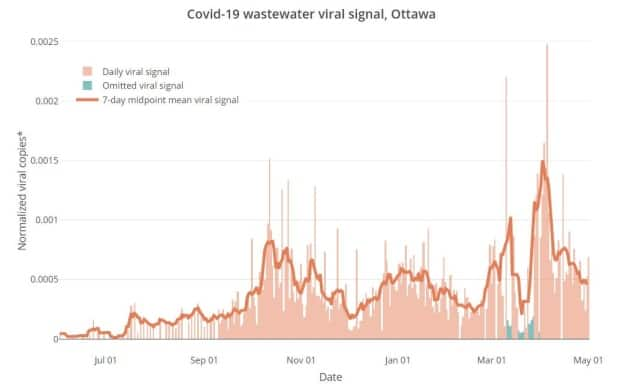Ontario probably won't be ready to end stay-at-home order on May 20, experts say

Ontario is scheduled to break out of its stay-at-home order on May 20, but health experts say the province likely won't be ready by then and may need to extend the order for a bit longer, especially if we want avoid another pandemic wave.
The Ontario government strengthened pandemic rules three times in April, all as COVID-19 cases and hospitalizations surged.
Those sweeping changes started less than two months after eastern Ontario came out of the winter shutdown.
"When we saw cases dipping in February, people said 'Oh, these are the dying embers of the second wave,' but in fact they were also at the same time the sparks of a third wave," said Dr. Gerald Evans, an infectious disease specialist at Queen's University and Kingston Health Sciences Centre.
That is why it's important to be cautious when loosening restrictions, he said.
"This is really a lesson that we need to have learned ... from the previous [waves.]"
Instead of listing an arbitrary date when the stay-at-home order should end, Evans suggested the end of lockdowns should be pinned to when cases drop below a certain rate. More specifically, he said, when new COVID-19 cases get below a rate of 20 per 100,000 people per week.
To put that in perspective, Ontario was at 166.6 per 100,000 on May 1 and Ottawa was at 102.9 per 100,000 as of Wednesday. Two weeks ago Ottawa's number was near 180. It hasn't been close to 20 since late November.
Could parts of eastern Ontario drop that low by May 20? Probably not, according to Evans, but he said it's possible that some regions with rates of around 30 — like Leeds, Grenville and Lanark counties, located between Kingston and Ottawa — could reach that target by the end of the month.
The Eastern Ontario Health Unit (EOHU) is currently in the low 50s and the Kingston area is in the mid-40s.
EOHU Medical Officer of Health Dr. Paul Roumeliotis said earlier this week he would at least like to see the order extended through the May 24 long weekend to discourage spread during holiday gatherings.

COVID levels in wastewater still high
One of Ottawa's telling coronavirus signs is in the city's poop.
The viral load in the city's wastewater has decreased, but is still two to three times higher than it was last summer and continues to hover around the January peak.

When the viral load increases, it goes up quite sharply, according to Tyson Graber, a scientist on Ottawa's coronavirus wastewater monitoring program.
"But when we come down," he said, "it's a very slow trailing off."
This time around, Graber said the rate is "stubborn" and keeps plateauing. Part of that may be due to the more contagious variants of concern, which made up more than three-quarters of the coronavirus that was found in wastewater as of May 1.
Besides the variants, another factor during this third wave of the pandemic is widespread vaccinations. That will make a big difference if measures stay in place, according to Evans.
If people can hold out a bit longer, he said the start of summer could look much closer to normal.
"The longer the lockdown is in place and stay-at-home orders are in place, then the bigger bang for our buck we're going to get from vaccination."

 Yahoo Finance
Yahoo Finance 